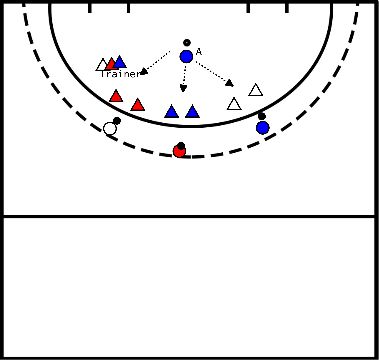Hockey drills for technique push pass
- Overplaying past the pawns.
- When the players reach the last pawn, the last player runs around the pawn.
- And this last one is going to attack.
- The defender tries to defend it out.
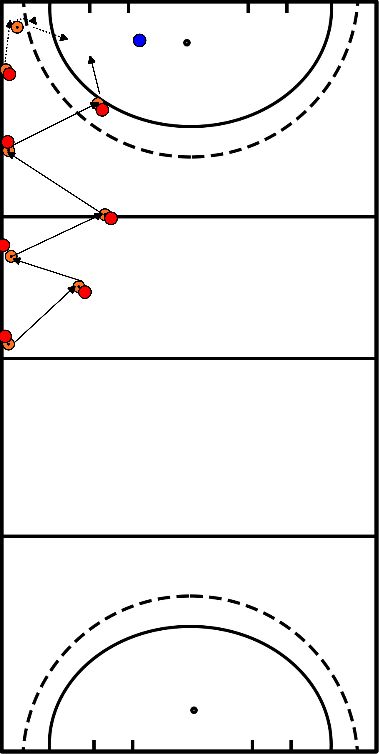
- Player A plays to B
- Player B plays to C
- Player D runs into the circle
- Player C plays to D
- D rounds at the goal
At each pawn 2 players.
You rotate through, so when you have been at station A you go to B, from B to C and from C to D.
You rotate through, so when you have been at station A you go to B, from B to C and from C to D.
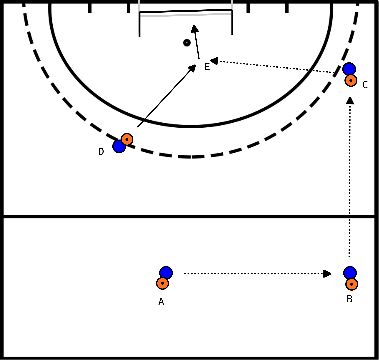
- Player A plays to B
- Player B plays to C
- Player D runs into the circle
- Player C plays to D
- D rounds at the goal
- At each pawn 2 players.
- You rotate through, so when you have been at station A you go to B, from B to C and from C to D.
- You rotate through, so when you have been at station A you go to B, from B to C and from C to D.
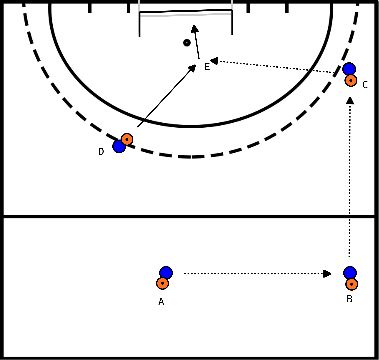
- Player A flattens the ball wide to the right.
- B takes the ball open and plays it deep to C who has come running in to the line.
- C immediately plays the ball wide back to B who offers himself there.
- B plays the ball to D who offers himself from inside the circle OUTSIDE the circle.
- D runs with the ball along the back line back into the circle and plays the ball to the head where A is standing meanwhile.
- A shoots at the goal.
Passing:
B to A
A to C - white to blue
C to D - blue to orange
D to B - orange to red
B to A - red pawn to white
B to A
A to C - white to blue
C to D - blue to orange
D to B - orange to red
B to A - red pawn to white
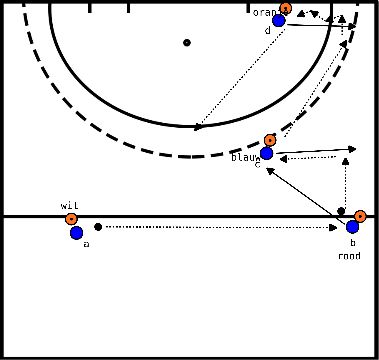
You stand in a square and flatten the ball into a square. This is off to 2 sides. The team that scored first gets a 2nd ball and the team that was slower now has to defend the ball.
- A flattens to B
- B flattens to C
- C flattens to D
D scores and either gets a new ball or goes to defend.
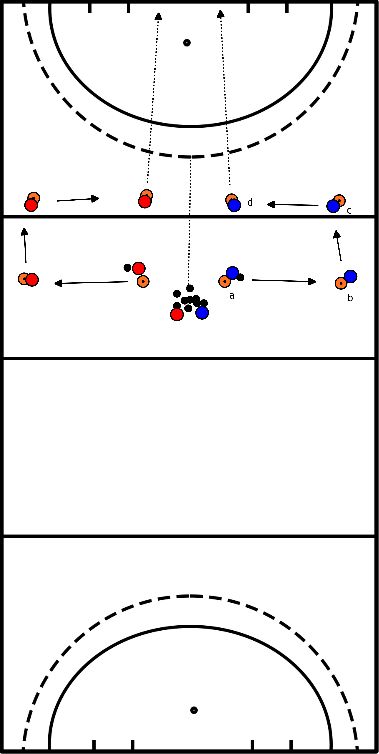
- Focused pass giving and receiving.
- Center player focus on accepting, handling ball and passing on.
Points of focus:
- In the forehand
- High stop
- Speed ball -width of field serve.
Extension exercise: middle player runs in and asks for the ball, accepts and turns around, passes the ball runs back quickly and offers again.
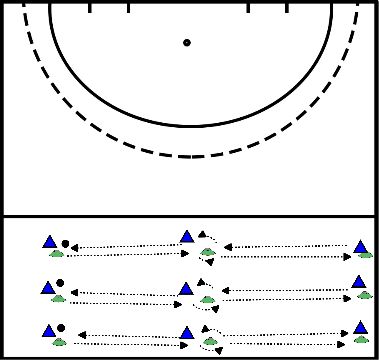
Goal:
- Taking out over the side
- Build up over the flank
- Get to the back line and then pass to goal
Points of attention:
- Playing the ball into the forehand.
- Moving behind the ball.
- Player plays the ball hard through push 1 ==> 2 runs directly after her/his pass
- Flattens the ball hard over long distance 2 ==> 3
- Drives the ball to the back line and passes to 4
- Takes to round at pace on goal
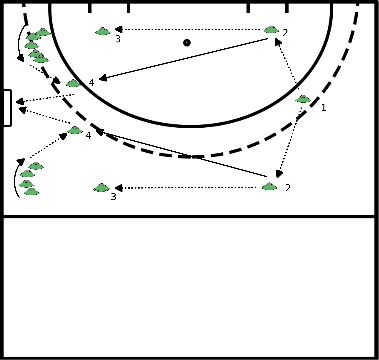
- A plays the ball to B
- B plays the ball to C who has run up to the green pawns
- C runs along the pawn line and passes the ball to A who has run through to the circle
- A then finishes on goal
You can perform this exercise on both sides.
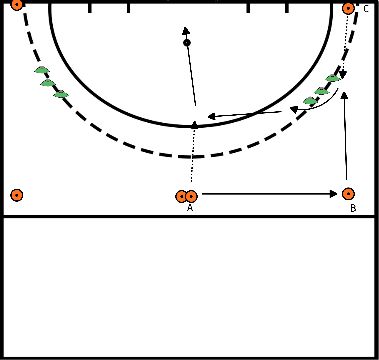
- Party game with two goals and a square in the middle of the field.
- The ball may not be played through the square. In that case the ball is in touch.
- So the idea is to play field hockey outside and not through the axis of the field.
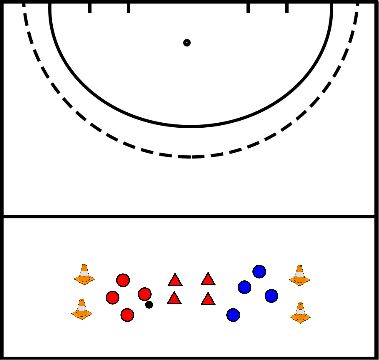
- With a walk-in ball
- Playing a right front
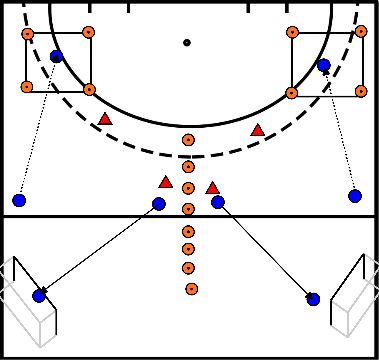
Learning to attack using space over right.
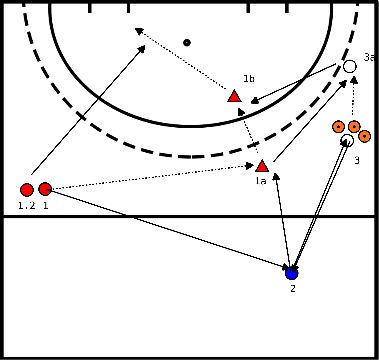
Three color game
- The trainer has three colors of pawns in his hand. Red, white and blue.
- Player blue A takes his turn.
- Trainer first puts color pawn 1 in the air --> For example, pawn white.
- Player blue A starts running towards the edge of the circle and receives the ball from player blue ->.
- The latter then plays the ball through the white gate as the trainer thus puts the white pawn in the air.
- Player A takes the ball through the gate and rounds on goal.
- After his shot, he takes over the spot of the player who passed the ball to him.
- The trainer puts a new color pawn in the air for the next player etc.
